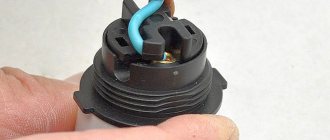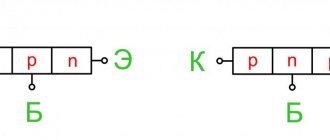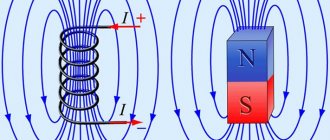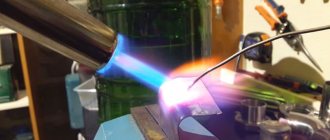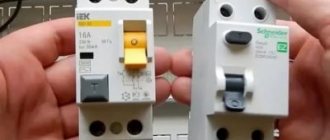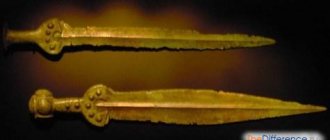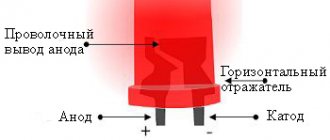Features of rosin
Rosin is a substance consisting of resin acids and their isomers. It is obtained from the resin of coniferous trees, therefore it has a characteristic resinous odor and has an ocher, yellow, orange or red tint. The scope of application of this chemical compound is wide: light industry (production of eco-leather, plastic, rubber, paint and varnish products, etc.); food industry (additive E915); art (rubbing parts of bowed musical instruments); sports (prevention of slipping in ballet, baseball, weightlifting); electrical engineering and electronics (soldering).
soldering rosin
Rosin is optimal for soldering because:
- Provides a quick tinning process;
- guarantees the strength of the contact point;
- if necessary, it can be easily removed from surfaces;
- not exposed to moisture;
- does not enter into a chemical reaction with the surfaces to be joined;
- non-toxic.
Typically, soldering uses solid rosin, which is sold in the form of glassy bars or powder. However, some technicians prefer liquid rosin. It contains organic compounds, which make it convenient to apply the substance to small surfaces. The brush included in the bottle allows you to use this liquid precisely. Residues can be removed with alcohol or water.
It is necessary to use rosin in order to get rid of oxide films covering any metal surfaces. The abietic acid contained in rosin ensures instant dissolution of such deposits, while ensuring good spreading of the metal.
Borax
Borax is another flux that is used in soldering. For these purposes, it is supplied in powder form. It goes on sale packaged in jars or plastic bags.
Borax has a high melting point (about 900 degrees) and a regular soldering iron will not work in any way for its melting and subsequent application, and you can’t even think about soldering radio components using borax!
This flux is used primarily when soldering large parts made of non-ferrous metals, mainly copper pipes of heating and air conditioning systems, bronze, and steel with refractory solders using a blowtorch or gas torch.
Flux: what is it?
Flux is a substance that ensures strong contact between parts to be soldered. Thanks to its use, the surface of the metals being joined is cleaned, the working surfaces do not oxidize during and after soldering. This guarantees a strong bond between metal atoms and prevents corrosion. Flux and the surfaces being joined usually do not react chemically with each other (with the exception of those intended for reactive flux soldering).
liquid flux in a bottle with a brush
The following fluxes are commonly used for soldering:
- ammonia;
- borax;
- orthophosphoric acid;
- acetylsalicylic acid;
- zinc chloride, etc.
Each of them is used based on the physical and chemical characteristics of the surfaces being joined. For example, phosphoric acid should be used to join surfaces made of aluminum and stainless steel, zinc chloride is best for joining ferrous metals, borax is suitable for stainless and heat-resistant steels.
Many fluxes are a complex mixture of chemical components. Thus, the combination of potassium, zinc and lithium chloride with sodium fluoride is intended to dissolve aluminum oxides. By combining borax, boric acid and a saturated solution of zinc chloride, you can obtain a high-quality substance for soldering stainless steel.
soldering using flux
Note that in order to independently produce a multicomponent compound, you need at least some knowledge in the field of chemistry, knowledge of proportions, high-quality ingredients and personal protective equipment. Therefore, if you want to solder parts at home, it is best to purchase flux at a specialized store. Today, the range of soldering substances offered is quite wide.
The safest and most popular flux is rosin. This substance is the most common because it has a very affordable price and can be purchased on any market. Unlike other fluxes, rosin can melt at relatively low temperatures (from 52 degrees Celsius), so it is also used for soldering at home.
Pros and cons of soldering acid
When rosin alone is not enough, then acid comes to the solder’s aid. Soldering acid is an active type of flux, so it works well where rosin fails.
The main advantages of soldering acid are related to the following:
- Acid makes it easy to treat contact in the most inaccessible places;
- The high aggressiveness of soldering acid makes it possible to quickly destroy the most durable oxide film on the metal surface;
- Thanks to the special properties of soldering acid, you don’t have to worry about the oxide film appearing on the metal again. The acid will prevent this;
- Due to its versatility, acid can be used for soldering any metals.
However, in addition to the positive aspects, soldering acid also has disadvantages. The most important of them is the impossibility of using it for soldering circuit boards. The thing is that soldering acid actively destroys the traces of the boards.
The second disadvantage is related to the limited period of use. Due to the fact that soldering acid contains special components, its shelf life is insignificant. It's all about gases that evaporate over time.
Well, the third disadvantage is associated with the harmfulness of use for humans. When working with soldering acid, it is imperative to use personal protective equipment.
Therefore, the question of which is better to solder, rosin or acid, is ambiguous. Both fluxes are widely used for various types of soldering. Therefore, first of all, you need to look at what exactly is to be soldered with them.
Are there any differences between rosin and flux?
Apart from being more popular among technicians, rosin has no fundamental differences from other fluxes. Like these substances, rosin also performs a utilitarian function - it guarantees the stability of the adhesion site. It can also be used in both solid and liquid aggregate states, depending on the type of solder. There are no differences in the method of application: any auxiliary substance is applied to a previously cleaned surface; if there is excess, it is subsequently carefully removed. Another (and important) quality of all fluxes is that they are produced in accordance with GOST, so good soldering quality is guaranteed.
Is rosin a flux or a substance for another purpose? This question may concern all those who in practice are faced with the need to solder metal surfaces.
Thus, the choice between rosin or flux is a problem related more to generic concepts than to significantly different materials. Flux has many varieties - salts, acids, other chemical compounds - one of which is rosin. To decide which one is best to use for electrical work, you need to take into account the composition of the surfaces to be joined, their surface tension, degree of contamination and other physical and chemical factors.
How to prepare flux for soldering yourself
Having understood what soldering flux is, it is worth considering the easiest way to independently produce a similar substance used in soldering radio components, for tinning printed circuit boards:
- Several pieces of rosin are wrapped in thick cloth;
- By hitting the resulting bag with a heavy hammer, the rosin inside is thoroughly crushed;
- The resulting crushed rosin is poured into a container with ethyl alcohol and, stirring, dissolved in it completely.
Homemade composition
In order to speed up the dissolution of rosin, place the container with alcohol in a small saucepan with hot water. To obtain a gel-like substance, glycerin is added to the resulting solution.
How to replace soldering flux
If the necessary flux is not available for some reason, it can be replaced with the following available substances:
- Aqueous solution of aspirin;
- Lemon acid;
- Vinegar;
- Rosin with regular pork fat.
All these available means, although they do not have all the advantages of specialized compounds, if used correctly, soldering using them will be of sufficient quality and reliability.
Thus, having understood what soldering flux is and what it is needed for, we can say that its use is an integral step in soldering technology, without which the resulting connection will be unreliable and short-lived.
Soldering with a soldering iron
In order to start soldering, you need to prepare a workplace and the necessary tools. Regardless of the type of proposed work, the following requirements are imposed on the workplace:
- The presence of good lighting will allow you not only to work comfortably, but also to notice small flaws in the soldered parts, which is difficult if there is a lack of light;
- No flammable items;
- Free working space on which you can easily place the part to be soldered;
- The presence of ventilation will make work not only more comfortable, but also safer; inhaling molten rosin has a negative effect on the respiratory system;
- A magnifying glass makes it possible to work even with small parts and thin wires;
- A simple stand solves the problem of placing a heated soldering iron.
The next stage of preparation will be the choice of tool, and a beginner is always faced with the question of what is needed for soldering with a soldering iron.
Soldering iron selection
The basis of high-quality soldering is heating metal parts to the soldering temperature; accordingly, for each type of work it is recommended to use soldering irons of different capacities:
- For soldering radio components and microcircuits, it is best to use a soldering iron with a power of no more than 60 Watts, otherwise you can overheat the part or simply melt it;
- Parts up to 1 mm thick will warm up better when using a tool with a power of 80-100 Watts;
- Parts with a wall thickness of up to 2 mm require greater power and some experience in operation, so soldering of such parts will not be considered in this article.
Neutral substances
Neutral fluxes include rosin, which is recommended for soldering small radio components and microcircuits.
This popular reagent is needed in order to solder parts of heterogeneous structure made of copper and its alloys at relatively low heating temperatures at the joint (no more than 450 degrees). Moreover, this operation is permissible even if there are thin oxide films on the surface of the workpiece.
Due to their low activity, rosin-based fluxes ensure protection of products from corrosion and are therefore in high demand.
When preparing the working composition, alcohol, glycerin or turpentine are added to the rosin crushed to a powder state, which helps to improve the quality of the mixture.
Neutral flux gels are sold, which are needed for lead-free soldering of microcircuits. They are convenient to apply with a special dispenser syringe.


